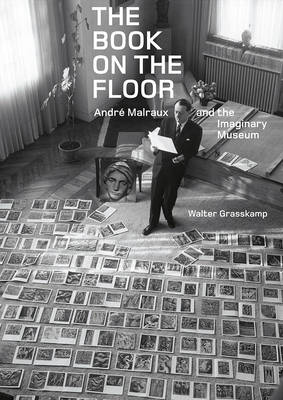
- Afhalen na 1 uur in een winkel met voorraad
- Gratis thuislevering in België vanaf € 30
- Ruim aanbod met 7 miljoen producten
- Afhalen na 1 uur in een winkel met voorraad
- Gratis thuislevering in België vanaf € 30
- Ruim aanbod met 7 miljoen producten
Zoeken
€ 48,95
+ 97 punten
Omschrijving
In 1954, the French writer, politician, and publisher André Malraux (1901-1976) posed at home for a photographer from the magazine Paris Match, surrounded by pages from his forthcoming book Le musée imaginaire de la sculpture mondiale. The enchanting metaphor of the musée imaginaire (imaginary museum) was built upon that illustrated art book, and Malraux was one of its greatest champions. Drawing on a range of contemporary publications, he adopted images and responded to ideas. Indeed, Malraux's book on the floor is a variation of photographer André Vigneau's spectacular Encyclopédie photographique de l'art, published in five volumes from 1935 on--years before Malraux would enter this field. Both authors were engaged in juxtaposing artworks via photographs and publishing these photographs by the hundreds, but Malraux was the better sloganeer. Starting from a close examination of the photograph of Malraux in his salon, art historian Walter Grasskamp takes the reader back to the dawn of this genre of illustrated art book. He shows how it catalyzed the practice of comparing works of art on a global scale. He retraces the metaphor to earlier reproduction practices and highlights its ubiquity in contemporary art, ending with an homage to the other pioneer of the "museum without walls," the unjustly forgotten Vigneau.
Specificaties
Betrokkenen
- Auteur(s):
- Uitgeverij:
Inhoud
- Aantal bladzijden:
- 240
- Taal:
- Engels
Eigenschappen
- Productcode (EAN):
- 9781606065013
- Verschijningsdatum:
- 10/12/2016
- Uitvoering:
- Hardcover
- Formaat:
- Genaaid
- Afmetingen:
- 168 mm x 236 mm
- Gewicht:
- 929 g

Alleen bij Standaard Boekhandel
+ 97 punten op je klantenkaart van Standaard Boekhandel
Beoordelingen
We publiceren alleen reviews die voldoen aan de voorwaarden voor reviews. Bekijk onze voorwaarden voor reviews.











